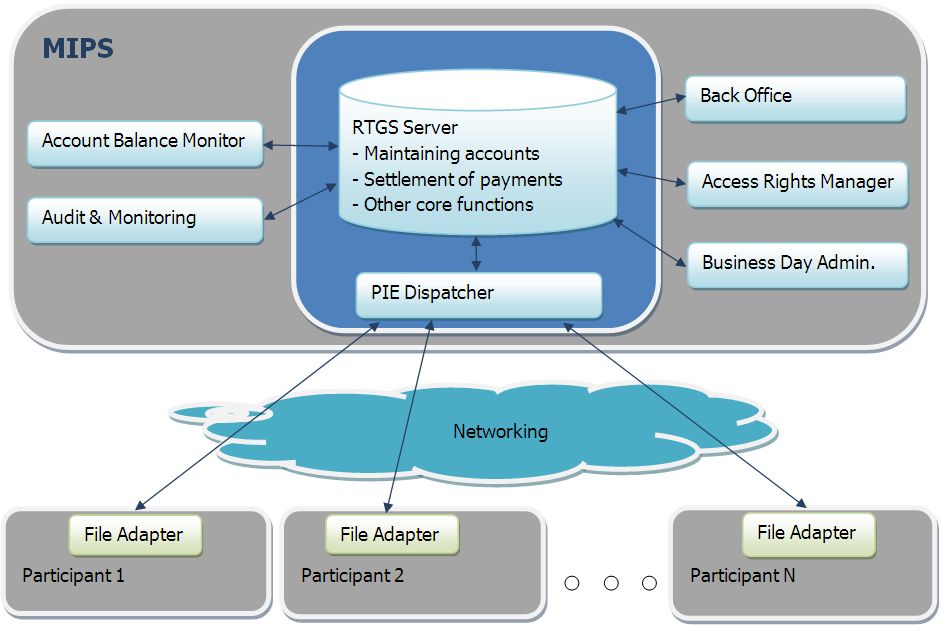Technical features of MIPS
MIPS is a centralized real time gross settlement system whose implementation follows the international technical and security standards. It offers advanced, harmonized and high-quality service, a lot of functionality and interfaces for participants, regardless of where they are.
The format of the messages used in MIPS is a subset of the messages in SWIFT MT standard and ISO 15022 MT standard. The format of the messages is defined in the document Standard for the purpose and format of the messages in MIPS (available only in Macedonian language), which provides examples of using each type of message, set of encoded characters allowed in the messages, conversion rules of Cyrillic letters in Latin, etc.

MIPS is organized in modules, in order to ensure stability and high speed of data processing. MIPS communicates with external participants using the module for communication, exchange and routing of messages - PIE Dispatcher. This module accepts messages sent by participants, performs tasks depending on the types of messages and forwards them to the data module. Also, the data module delivers answers and notifications to the participants through this module. Maintaining settlement accounts, settlement of payments, dealing with database and other core functions are performed in the data module - RTGS Server. Data module provides settlement of a large number of transactions per time unit and managing large data tables without difficulty. For internal monitoring of the system of the National Bank, as well as performing active administrative operations, operational and control applications are used - Account Balance Monitor, Audit & Monitoring, Back Office, Access Rights Manager and Business Day Administrator. Participants connect with MIPS through the connection application File Adapter that uses own transport protocol.
MIPS is redundantly designed system aimed to ensure continuity of the system operations, i.e. uninterrupted service for participants. All system components have redundant components that continue operating in case of failure of the operation of the primary component.
{{Title}}
{{Intro}}
{{{Content}}}
{{#hasElements Images}}
{{#each Images}}
{{#showInline ShowInGallery IsThumbNail}}
{{{dataImg this params="?width=886"}}}
{{/showInline}}
{{/each}}
{{#each Images}}
{{#showInline ShowInGallery IsThumbNail}}
{{{dataImg this params="?width=200&height=100"}}}
{{/showInline}}
{{/each}}
{{/hasElements}}